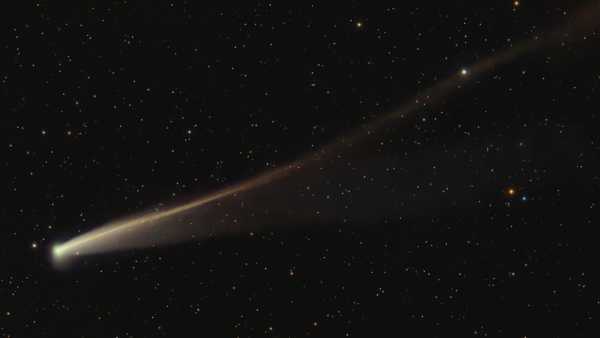Family Captures Debris Falling From Destroyed SpaceX Starship Rocket – YouTube
See more
Amazing footage captured the moment a SpaceX rocket launch failure lit up the sky over the Turks and Caicos Islands on Thursday. The spectacular sight, which saw multiple burning pieces of the massive spacecraft leave a bright smoke trail across the Atlantic, was captured on camera by a family on Grand Turk, according to the Associated Press.
SpaceX launched its seventh Starship test flight from its Starbase in Texas at 4:37 p.m. CT on Jan. 16. However, after successfully separating the rocket booster, the company lost contact with the spacecraft and a fire broke out in the back of the rocket, causing it to explode over the Atlantic Ocean about eight minutes after liftoff.
“Starship experienced a rapid unplanned disassembly during engine firing,” SpaceX said in a post on X at 5:24 p.m. CT on Jan. 16. “In tests like this, success is determined by what we learn, and today’s flight will help us improve Starship’s reliability.”
Elon Musk, the company's main owner, commented on the footage on Channel X, noting that “success is uncertain, but entertainment is guaranteed!”
Success is uncertain, but entertainment is guaranteed! ✨ pic.twitter.com/nn3PiP8XwGJanuary 16, 2025
Despite the spacecraft's destruction, the super-heavy rocket booster successfully returned to the launch pad, where it was caught by the tower's huge robotic arms, Live Science affiliate Space.com reports.
There were no astronauts on board the spacecraft.
This isn’t the first time Starship has broken up during a test flight. During the rocket’s second launch in November 2023, the spacecraft exploded about four minutes after liftoff, punching a temporary hole in the upper atmosphere known as an “ionospheric hole.” However, it’s too early to tell whether the latest eruption caused a similar disruption.
Preliminary data indicates an oxygen/fuel leak in the space above the ship's engine firewall that was significant enough to create pressures exceeding the vent's capacity. In addition to the obvious double-check for leaks, we will add fire suppression to this volume and… January 17, 2025
The exact cause of the spacecraft's sudden disintegration has yet to be determined, although Musk noted that it appeared to be an oxygen or fuel leak into the cavity above the craft's engine firewall.
The debris is believed to have landed in the Gulf of Mexico and Caribbean Sea, although the exact location has not been determined at the time of writing. If anyone finds debris from the spacecraft, the company strongly advises against attempting to touch or retrieve it. “Instead, please contact local authorities or the SpaceX Debris Hotline,” SpaceX said.
TOPICS spacex

Pandora DewanSocial Links NavigationTrend News Editor
Pandora is the news editor at Live Science. She is also a science anchor and previously worked as a senior science and health reporter at Newsweek. Pandora holds a degree in biological sciences from the University of Oxford, where she specialized in biochemistry and molecular biology.
Sourse: www.livescience.com




